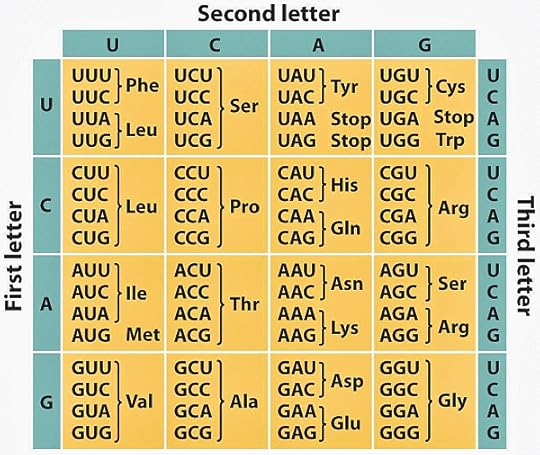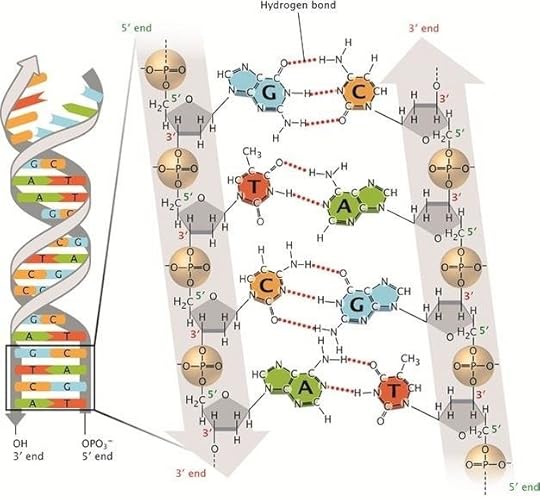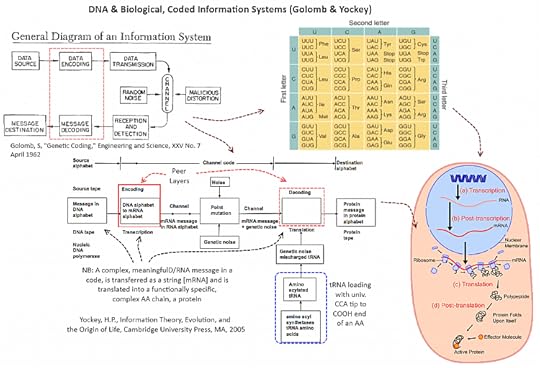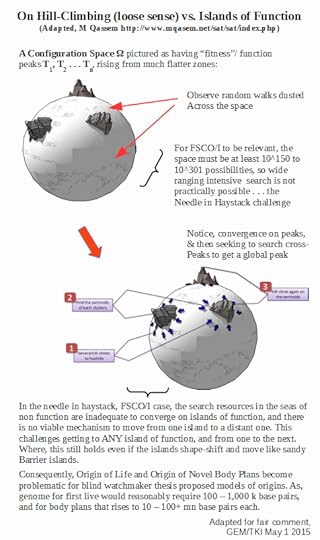ID Breakthrough — Syn61 marks a live case of intelligent design of a life form
Let’s read the Nature abstract:
Nature (2019) Article | Published: 15 May 2019
Total synthesis of Escherichia coli with a recoded genome
Julius Fredens, Kaihang Wang, Daniel de la Torre, Louise F. H. Funke, Wesley E. Robertson, Yonka Christova, Tiongsun Chia, Wolfgang H. Schmied, Daniel L. Dunkelmann, Václav Beránek, Chayasith Uttamapinant, Andres Gonzalez Llamazares, Thomas S. Elliott & Jason W. Chin
Abstract
Nature uses 64 codons to encode the synthesis of proteins from the genome, and chooses 1 sense codon—out of up to 6 synonyms—to encode each amino acid. Synonymous codon choice has diverse and important roles, and many synonymous substitutions are detrimental. Here we demonstrate that the number of codons used to encode the canonical amino acids can be reduced, through the genome-wide substitution of target codons by defined synonyms. We create a variant of Escherichia coli with a four-megabase synthetic genome through a high-fidelity convergent total synthesis. Our synthetic genome implements a defined recoding and refactoring scheme—with simple corrections at just seven positions—to replace every known occurrence of two sense codons and a stop codon in the genome. Thus, we recode 18,214 codons to create an organism with a 61-codon genome; this organism uses 59 codons to encode the 20 amino acids, and enables the deletion of a previously essential transfer RNA. [Cited, per fair use doctrine for academic, non commercial purposes.]
Let us refresh memory on the genetic code:
 The Genetic code uses three-letter codons to specify the sequence of AA’s in proteins and specifying start/stop, and using six bits per AA
The Genetic code uses three-letter codons to specify the sequence of AA’s in proteins and specifying start/stop, and using six bits per AAAnd on the DNA:
 The DNA Helix with GCAT (HT: Research Gate, fair use)
The DNA Helix with GCAT (HT: Research Gate, fair use)Then also, protein synthesis:
 Protein Synthesis (HT: Wiki Media)
Protein Synthesis (HT: Wiki Media)Phys dot org gives some context:
A team of researchers at Cambridge University has replaced the genes of E. coli bacteria with genomes they synthesized in the lab. In their paper published in the journal Nature, the group describes replacing the genome and removing redundant genetic codes [–> three letter 4-state elements have 64 possibilities but only 20 are needed for typical protein AA’s, AUG codes for an AA and serves as . . . . In this new effort, the researchers had two goals: The first was to synthesize the genome of an E. coli bacterium in their lab—all four million letters of it. The second was to find out what would happen to such a specimen if some of its DNA redundancies were removed . . . .
The researchers report that it took longer for the special bacterial specimen to grow, but other than that, it behaved just like unedited specimens. They suggest that in future efforts, it might be possible to replace the redundancies they removed with other sequences to create bacteria with special abilities, such as making new types of biopolymers not found in nature.
In short, they confirmed that the choice of “synonym” has a regulatory effect.
Where are we today, then?
First, we have definitive demonstration of the intelligent design of a genome. Yes, they obviously have not created a de novo cell body (a much more difficult task), but we see that intelligent design of life here definitively passes the Newton test of observed actual cause. Further, we see that DNA functions as an information system in the cell, supporting the significance of this conceptual representation, based on Yockey’s work:

At this stage, we definitively know that using nanotech molecular biology and linked computational techniques it is feasible to construct a genome based on intelligently directed configuration. AKA, design.
Therefore, intelligent design, as of right not sufferance, sits at the table for study on origin of life and of body plans.
Where, we separately know on configuration space search challenge, that it is maximally implausible to construct in excess of 500 – 1,000 bits of functionally specific complex organisation and/or associated information. As a reminder:

We are now in a different ball game completely: Intelligent Design of life is demonstrated to be feasible and actual in the here and now, as of this investigation. Therefore, as of right, it is a serious candidate to explain what we see in the world of life; especially as regards origin of cell based life and origin of main body plans.
Going forward, we are now a full-fledged independent school of thought. END
PS: James Tour on the Mystery of Life’s Origin, challenging the usual OoL claims, focus from c. 8:30 on:
Copyright © 2019 Uncommon Descent . This Feed is for personal non-commercial use only. If you are not reading this material in your news aggregator, the site you are looking at is guilty of copyright infringement UNLESS EXPLICIT PERMISSION OTHERWISE HAS BEEN GIVEN. Please contact legal@uncommondescent.com so we can take legal action immediately.
Plugin by Taragana
Michael J. Behe's Blog
- Michael J. Behe's profile
- 219 followers



